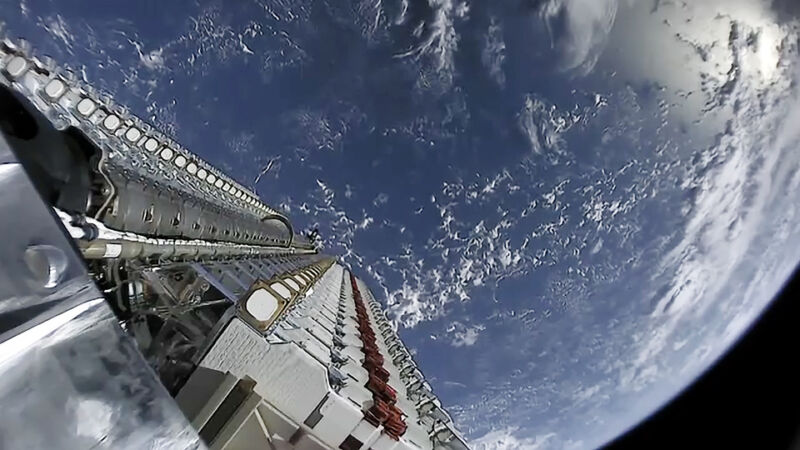
Enlarge / A stack of 60 Starlink satellites launched in 2019.
SpaceX began launching operational Starlink satellites five years ago this month. Since then, the company has been rapidly developing its constellation of broadband satellites in low-Earth orbit. SpaceX has now launched about 6,000 satellites with its Falcon 9 rocket and has delivered on its promise to provide fast Internet around the world. Today, the company is the largest satellite operator in the world by a factor of 10.
But is this massive enterprise to deliver Internet from space profitable?
According to a new report by Quilty Space, the answer is yes. Quilty built a model to assess Starlink’s profitability. First, the researchers assessed revenue. The firm estimates this will grow to $6.6 billion in 2024, up from essentially zero just four years ago. In addition to rapidly growing its subscriber base of about 3 million, SpaceX has also managed to control costs. Based upon its model, therefore, Quilty estimates that Starlink’s free cash flow from the business will be about $600 million this year.
So, what does it mean for this industry that Starlink has gone from zero to profitability in five years? What’s next for the network? Are there credible competitors to Starlink in OneWeb, Amazon’s Project Kuiper, or other planned megaconstellations? Can low-Earth orbit accommodate all of these satellites?
Please join me for a discussion of Starlink and these questions with Caleb Henry, the director of research for Quilty. Henry is a true expert in the area of satellite-based Internet, and we’ll get into the weeds of this topic. We’ll also be taking your questions.
This will be the first Ars Live event we’ve done in a few years. During these discussions, reporters and editors at Ars Technica speak with industry leaders about the most important technology and science news of the day. So please join us at 2 pm ET (18: 00 UTC) on June 11 on our YouTube livestream.